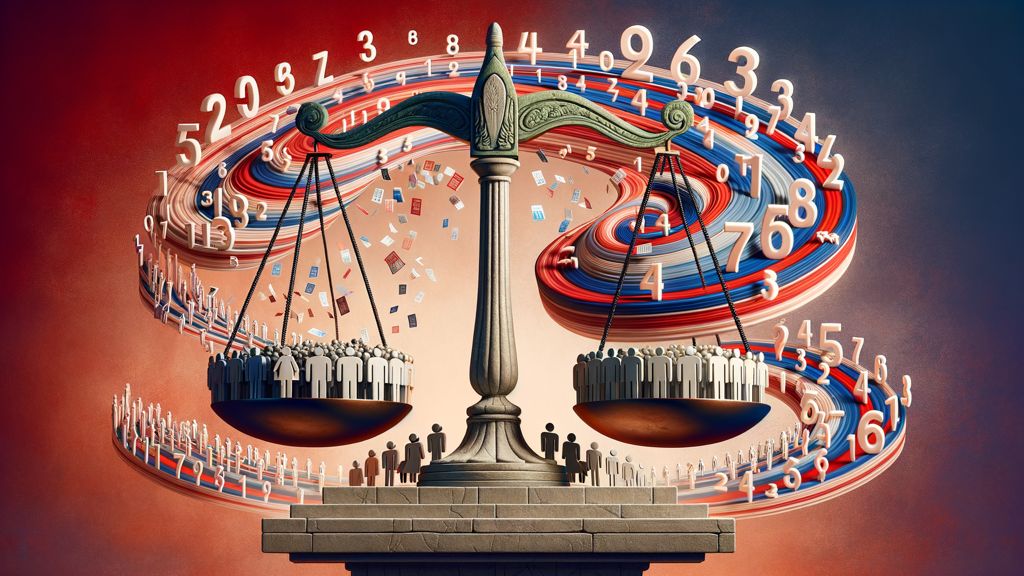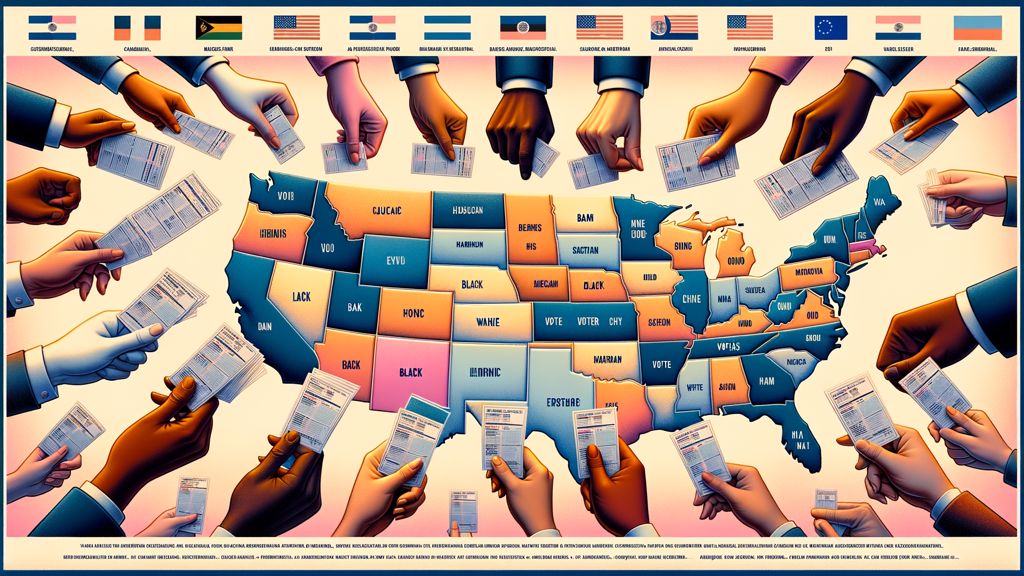How Vote Pair Is Reshaping Voter Power
Vote Pair is designed to restore balance in the American democratic process. In the United States, millions of voters feel disenfranchised because their votes are cast in districts or states where the outcome is all but decided. Vote Pair facilitates voluntary one-to-one agreements between voters in different electoral regions. It allows each to vote strategically while ensuring they both still support their candidate of choice. This system helps maximize the impact of every vote.
The core purpose is to boost voter agency in non-competitive districts. If implemented thoughtfully, vote pairing mechanisms could shift how Americans participate in elections, help mitigate the disproportionate weight of swing states, and reduce strategic voter suppression.
A Legacy of Skewed Electoral Influence

U.S. elections have long been shaped by unequal representation. The most common problem lies in the Electoral College and winner-take-all voting systems used in most states. In presidential elections, for instance, a voter in Wyoming holds 3.6 times more electoral power than one in California, due to population disparities (U.S. Census, 2020).
Historically, disenfranchisement isn’t limited to structural inequality. Factors such as race-based suppression, gerrymandering, and restrictive voter ID laws have also skewed outcomes. Even today, around 4.6 million Americans with felony convictions are denied the right to vote, according to The Sentencing Project (2023).
This historical imbalance has led to widespread feelings of disillusionment among voters in both deep red and deep blue states. Voter turnout has suffered. Strategic voting and protest voting have become commonplace responses—both of which dilute the integrity of electoral intent.
How Vote Pair Agreements Actually Work
Vote Pair creates an agreement between two voters in different states or districts, usually negotiated using online platforms. Key mechanics of the system include:
- Matchmaking Based on Voting Goals: A user indicates their actual preferred candidate and their willingness to vote for a compromise candidate if a suitable partner is found.
- Strategic Alignment: The platform pairs users from non-swing areas with those in swing regions where votes have higher leverage.
- Mutual Agreement: Each participant commits to vote based on the agreement, aiming to boost the lesser-represented party or candidate more strategically.
Example Scenario:
| Voter A | Voter B |
|---|---|
| California (Safe Blue) | Pennsylvania (Swing) |
| Prefers Green Party | Prefers Democrat |
| Vote trades support to Democrat | Supports Green Party candidate locally |
In this scenario, both voters ultimately support their political values while also influencing a battleground state more effectively. The focal point is voluntary adjustment to increase national political impact without demanding voters betray their principles.
Increasing Representation and Equalizing Voter Power

The structure of U.S. electoral processes inherently places different values on individual votes. Vote Pair directly addresses this disparity. By connecting voters across regions, this system empowers those in politically lopsided states to amplify their influence through strategic exchange.
Addressing Disadvantage Through Share of Impact
| State | Electoral Votes | Population (2020) | Citizen per Electoral Vote |
|---|---|---|---|
| Wyoming | 3 | 576,851 | 192,284 |
| California | 55 | 39,538,223 | 718,876 |
This comparison shows that Californian voters have significantly less influence per vote than Wyoming voters. With Vote Pair, citizens from high-population states get the chance to make a real difference in national outcomes, particularly in influencing presidential elections.
Additionally, minority parties like Libertarians, Greens, and Independents often have no chance of winning in districts dominated by Democrats or Republicans. By participating in vote pairing, their supporters can cast a meaningful protest vote with an uplift effect, knowing it is balanced elsewhere.
Morality, Intentions, and Heated Debates
Vote pairing raises important ethical questions. Critics argue that the practice may interfere with electoral purity by undermining the idea of voting one's true preferences outright. However, this view often overlooks that strategic voting already pervades U.S. elections due to fear of “spoiling” outcomes.
Ethical Strengths of Vote Pairing:
- Preserves voter intent: It lets people express support for ideals while also influencing competitive races.
- Enhances collective empowerment: Voters feel more connected to national outcomes rather than restricted by local political certainties.
- Voluntary and transparent: Participation is based on informed agreement and often includes open records or tracking confirmations.
Concerns Raised:
- Potential for manipulation or bad-faith agreements
- Vulnerability to misinformation or uninformed voting behavior
- Perception of reducing political differences to transactional exchanges
Overall, ethical debates still tilt toward Vote Pair being a reinforcement of democratic intent rather than a corruption of it.
Real-World Use and Public Case Studies
Vote Pair models have been tested in major U.S. elections, particularly within third-party and progressive spheres. In 2000, a series of informal vote swaps between Nader and Gore supporters aimed to prevent George W. Bush from winning key swing states while maintaining support for third parties.
Key Case Studies:
-
2000 Presidential Election:
- Over 35,000 Nader-Gore vote swap offers were logged online.
- Legal scrutiny led to temporary halts of websites, but set early precedents.
-
2016 Trump-Clinton Election:
- Newer platforms like VotePair and #NeverTrump facilitated deals among disaffected Republican and third-party voters in key areas like Florida and Ohio.
- An estimated 148,000 voting matches were attempted or proposed across platforms.
-
2020 Biden-Trump Race:
- Progressive groups increased use of pairing systems to avoid Green-party vote-splitting in states like Wisconsin and Michigan.
- While results are difficult to quantify directly, strategists credited Voter Pair services with improving alignment in progressive demographic areas.
These cases underline its rising legitimacy and influence in tight national races.
Legal Interpretation and Governmental Stance
Vote pairing has faced both legal challenges and endorsements depending on jurisdiction. While early attempts drew accusations of vote-buying or fraud, most interpretations now classify the practice as protected under the First Amendment.
Legal Landmarks:
- Porter v. Bowen (2007): The 9th Circuit Court ruled that vote pairing websites enabling voluntary political alliances are legal under free speech protections.
- Federal Election Commission: Has not formally prohibited vote pairing, although the context of online platforms may be subjected to compliance scrutiny under campaign laws.
State-specific laws still create uncertain regulatory landscapes. For example:
| State | Legal Stance on Voting Agreements |
|---|---|
| California | Protected as free speech |
| Texas | Warns against “quid pro quo” voting |
| New York | No formal opinion issued |
| Arizona | Advancing review under state AG |
While direct enforcement remains rare, ongoing legal audits and electoral reviews may influence how these systems evolve and how transparent future platforms need to be.
Scaling Up with Advanced Technology
The future of Vote Pair rests on combining civic motivation with scalable digital infrastructure. Technological adoption holds the key to legitimacy, accountability, and security.
Innovation Priorities:
- Transparent User Verification: To prevent bad-faith actors and bots from diluting effectiveness
- Blockchain-Based Commitment Tracking: To ensure that agreements are honored without compromising ballot secrecy
- Machine Learning for Voter Matching: To make more accurate, personalized pairings based on user values and political geography
Future iterations could integrate partnerships with ballot planning apps, campaign policy engines, or even state electoral commissions. There is also potential for international adaptation in other first-past-the-post or multi-party election systems globally.
Vote Pair also lends itself to integration with voter engagement campaigns, offering not just a matching system, but a digital tool to strategically mobilize communities.
Vote Pair isn’t only about clever strategies. It aims to level the democratic field by letting marginalized voters reclaim their influence. If nurtured correctly, it could change the voting experience from passive tradition into active negotiation. In a political climate defined by polarization and disengagement, tools like Vote Pair play a vital role in making democracy work for everyone.